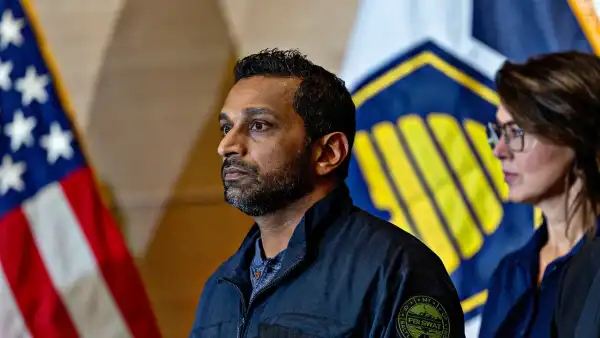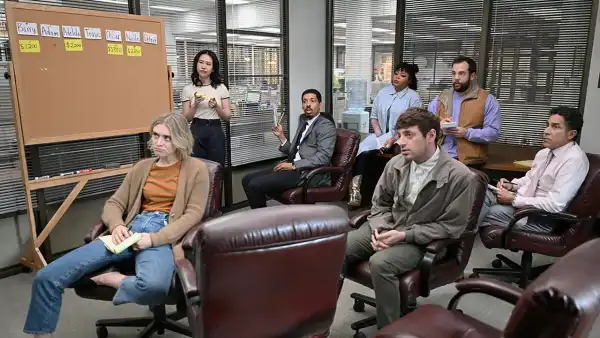
On Wednesday, Californians received the good news that their state’s most notorious cold case has finally been solved. The Golden State Killer (aka the East Area Rapist, the “Original” Night Stalker, and almost surely the Visalia Ransacker) has been identified by police as one 72-year-old Joseph James DeAngelo, an ex-cop.
This welcome relief closed the book not only on the Golden State Killer’s almost innumerable violent crimes—which he allegedly committed over a 12-year span in the 1970s and 1980s—but on the violent era in crime that he epitomized. The trauma and horror of that time has affected three generations—Boomers, Gen-Xers and early Millennials—and still haunts our current debate over “mass incarceration,” gun control, and school shootings, from BLM activists and prison reformers to Donald Trump and Sean Hannity.
First things first: the Golden State Killer was a one-man crime wave responsible for an almost unbelievable litany of evil from 1974 to 1986. (One website accurately nicknamed him “The Real Michael Myers.”) As the Visalia Ransacker, he began raping and beating young women of high school and college ages in April of 1974, and murdered his first known victim in September of 1975, the professor father of a girl he was trying to kidnap.
After his final Visalia rape in December of that year, he zeroed in on the Sacramento Metro area starting in the spring of 1976, attacking first young women and then upping the thrill factor by attacking husband/wife and boyfriend/girlfriend couples. An A&E documentary that aired some years ago revealed an especially sadistic moment. At a 1977 town hall meeting on the assaults, a man wondered how the attacker could rape a victim when there was another man in the house. That man, and his wife or girlfriend, were attacked within days. Clearly the killer had attended the meeting (or watched it on television)—which DeAngelo could have well done openly and without attracting attention, given his day job as a Sacramento police officer.
Shortly after the New Year in 1978, the East Area Rapist murdered his first couple, newlyweds Katie and Brian Maggiore (the forensic evidence of which was apparently a conclusive factor in DeAngelo’s arrest).
After being fired from his job as a Sacramento policeman due to a shoplifting arrest, DeAngelo evidently moved south along the Southern California coastline. Here, the East Area Rapist transitioned into his final identity as the Golden State Killer by refining his M.O. of attacking couples and adding a “Columbo”-like twist: the ski-masked sicko began deliberately targeting wealthy coastal homes with high-income professionals. (The “safe” neighborhoods, in other words.) He savagely tortured a youngish psychologist couple to death in December of 1979, and a prominent attorney and his interior decorator wife in March of 1980 (both couples lived in the chic Santa Barbara metro). Then he killed a med student living with his beautiful new wife at his father’s Orange County beachside vacation townhouse in August of 1980. All the women were savagely raped and beaten, while the husbands were awakened and then tied up if they remained conscious. More murders followed in 1981, and then after a five-year delay, the GSK’s final known victim was killed in 1986.
The Golden State Killer is notable today as perhaps the last of the “great” (if you can call them that) serial killer “epidemics” of the 70s, 80s, and early 90s. Looking back, it was almost as though one picked up where the other left off—as soon as one killer was caught, another equally awful attacker took his place. There was the Son of Sam in New York in 1976-77, followed by the Hillside Stranglers in Los Angeles in 1977-78. The “Bedroom Basher” and the “Toolbox Killers” took over for the 1978-79 season in LA and Orange County, only for William Bonin, the “Freeway Killer,” to make his mark during 1979-80. Ted Bundy, meanwhile, was overseeing his 1974-78 murder spree, as was Dennis Rader, the “BTK (Bind Torture Kill)” killer. Wayne Williams, the Atlanta Child Murderer, then took the ball from 1979-81, and passed it over to Gary Ridgway, the “Green River Killer,” who killed as many as 70 victims until his 2001 arrest. Then came the “real” Night Stalker, unrepentant Satanist Richard Ramirez, in 1984-85. By then, Jeffrey Dahmer wasn’t too far in the future.
This was the era when crimes against small children first truly entered the public consciousness. When respected author and rape survivor Alice Sebold wrote The Lovely Bones, she deliberately set her heroine’s murder in December of 1973, which the young girl narrating the novel from beyond the grave wryly noted was just before “child molestation” became the topic du jour in the media. That would soon change thanks to the horrific sex murders of Etan Patz in 1979 and Adam Walsh in 1981, and the notorious “McMartin Preschool” case of 1983—the same year that six-year-old David Rothenberg was hideously disfigured by his psychotic father. By 1987, little Lisa Steinberg had been murdered by her lawyer father Joel (while her traumatized, battered-wife mother Hedda Nussbaum didn’t intervene), and barely six years after that, 12-year-old Polly Klaas was raped and murdered by Richard Allen Davis when he home-invaded a sleepover party in Petaluma, California, in 1993.
Looking back, it’s no coincidence that Police Woman, Charlie’s Angels, Miami Vice, and Hunter were signature TV shows during much of this era, or that one of the most popular genres of movie during the late 70s and early 80s was the “slasher movie.” The idea of psychopathic serial killers brutally attacking young women (and occasionally high school and college-age young men) for no reason wasn’t just a screenwriter’s conceit—it was as real as the morning’s headlines.
A personal—and illustrative—aside, if I may: when I was about 11, I was with my grandfather, a retired LAPD officer and World War II Air Force veteran, who’d brought me home from school while my mom and grandma were out shopping. I decided to go roller skating outside my safe, low-traffic, middle-middle class ‘hood of one-story tract houses in the Downey/Whittier area of Southern California. “No,” my grandpa sighed. “I don’t feel like going out to watch you. My back hurts and I want to watch Judge Wapner. Go play video games on your computer or read.” I drew myself up and announced, “Well, I’ll just go out there by myself then!” Papa grabbed my arm and glared: “I see you’re in the mood to get MOLESTED today or run over!” He said it with a wink and a nod—but the point was taken.
No wonder many aging Boomers of his daughter’s generation, now watching Fox News or surfing the Internet in their retirements, cannot believe that violent crime is down, literally cut in half from its height in the late 80s and early 90s. Just look at the way President Trump demagogued the crime issue in 2016 (Mexican rapists, murder rates “higher than ever,” etc.), only to receive a head-nodding reception from so many in his audience.
This was a generation that grew up with duck-and-cover drills, came of age with race riots and Vietnam, and graduated into their prime young adult and parenting years with serial killers on the nightly news. Young women (and young men, especially gay ones) really were taking their lives into their hands living in the big city—and sometimes even in “safe” suburbs, like the ones Ted Bundy, Gerald Parker, Lawrence Bittaker, William Bonin, and Joseph James DeAngelo terrorized in the late 70s.
To use Trump-era pundits’ favorite term of art, one of the darkest legacies of the out-of-control crime wave of this period was that it not only sensationalized but normalized the idea that our cities were and would always be Little Beirut-like war zones of drive-bys, gangstas, and muggers. It made suburbanites almost resign themselves to the “fact” that slashers and molesters and monsters could be lurking around every tree-lined corner. It made us think that the “Nightmares” on our own Elm Streets would never end.
Even though crime rates have been steadily and thankfully declining for two decades, the terror and trauma sadly live on. And certainly the almost endless litany of homemade terror attacks since Oklahoma City, Columbine, and V-Tech—of which Sandy Hook, Dylann Roof, the Pulse Nightclub atrocities, the Las Vegas Concert massacre, Parkland, the Waffle House shooting, and the Toronto van attack are but merely the latest and worst examples—give a renewed justification for paranoia and fear.
May the capture of arguably California’s worst killer finally bring some peace, justice, and closure to the victims and their friends and families who remain. From those of us who lived through the frightening era he personified: good riddance.
Telly Davidson is the author of a new book on the politics and pop culture of the 90s, Culture War: How the 90’s Made Us Who We Are Today (Like it Or Not). He has written on culture for ATTN, FrumForum, All About Jazz, FilmStew, and Guitar Player, and worked on the Emmy-nominated PBS series “Pioneers of Television.”
Sourse: theamericanconservative.com






